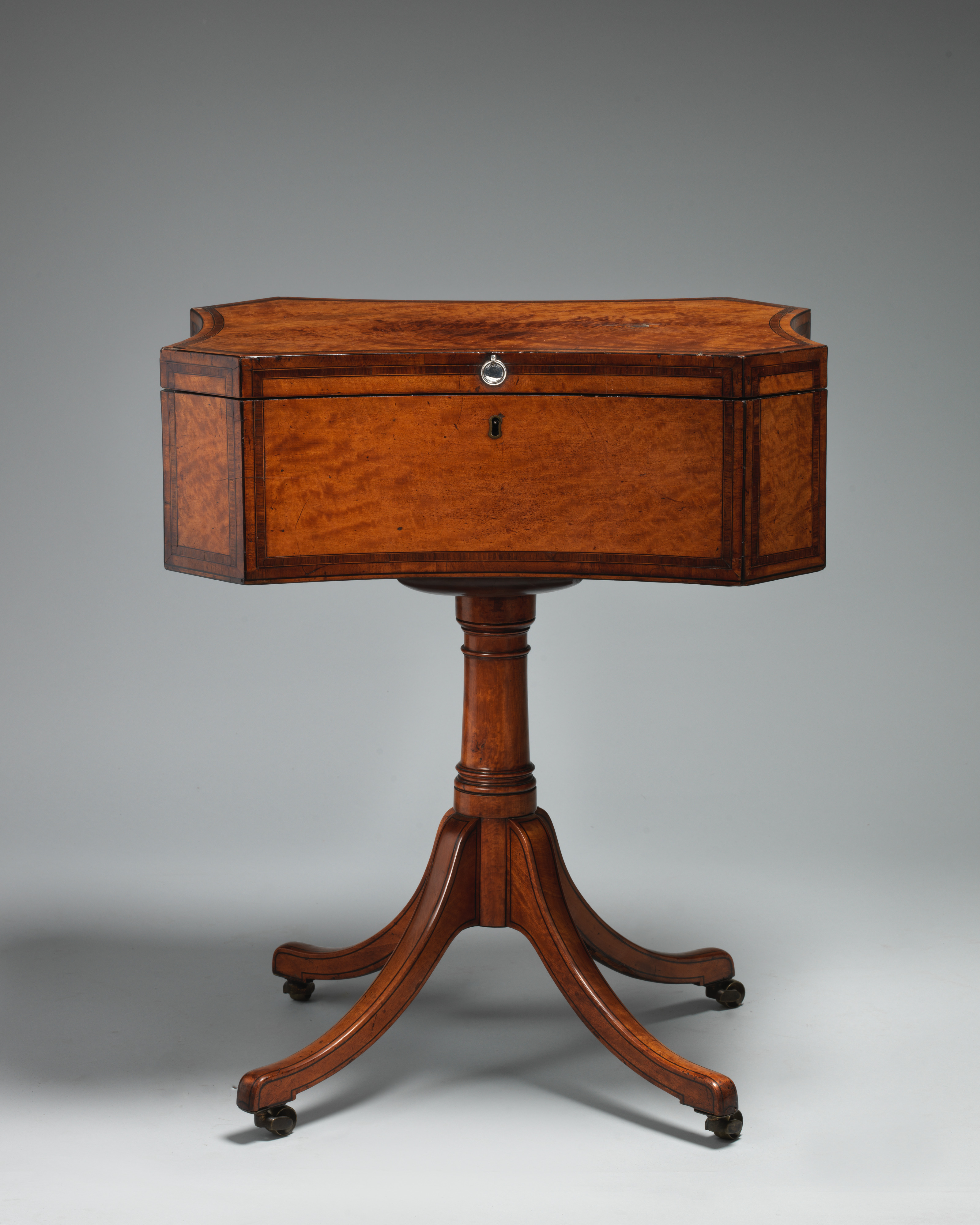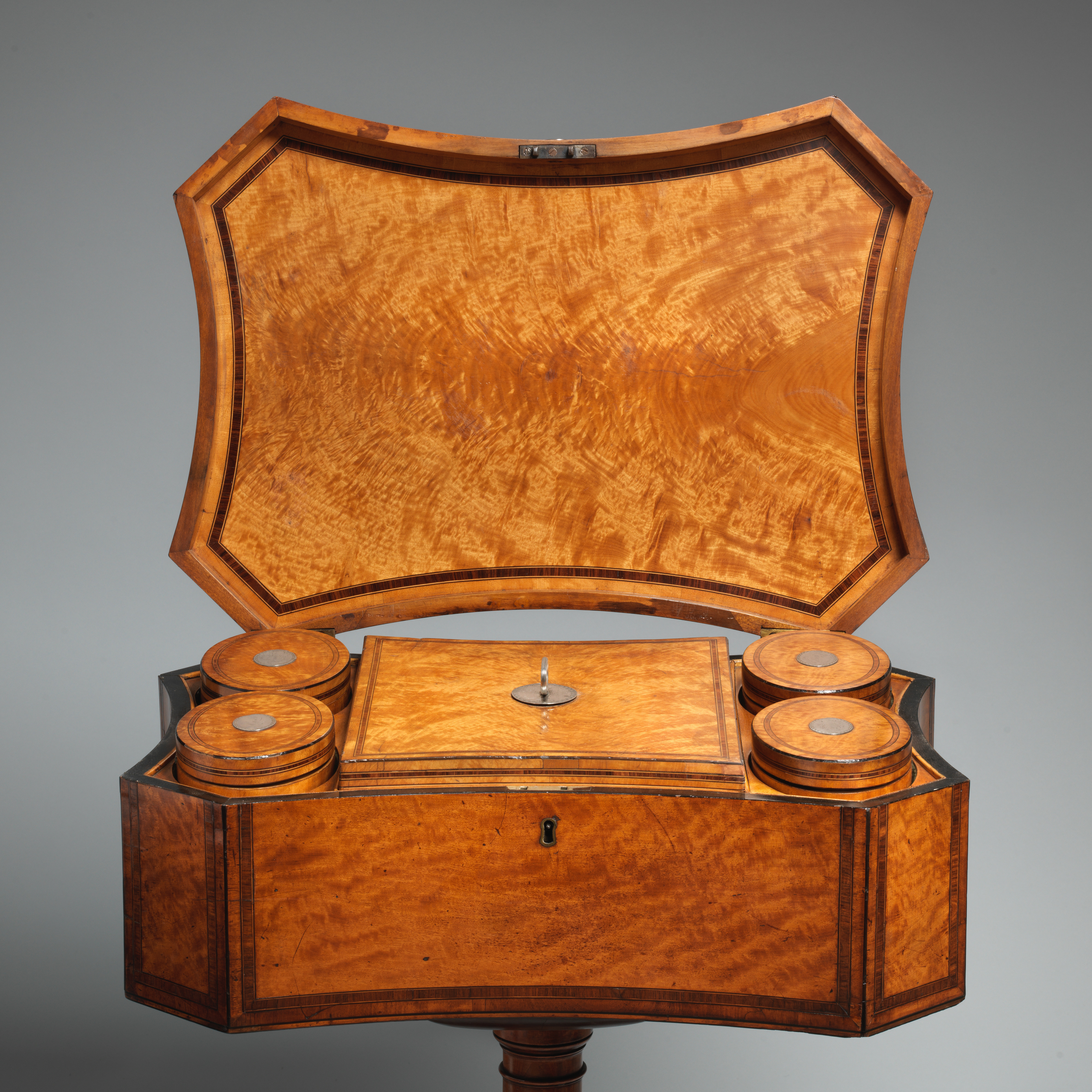Teapoy with four oval tea caddies
Not on view
The word teapoy derives from the Hindu tepai, meaning "three-legged" or "three-footed" and refers to a small table or stand on a tripod support. These were used "in drawing rooms to prevent the company rising from their seats whilst taking refreshment," according to the Regency furniture designer George Smith (act. 1804–28) in A Collection of Designs for Household Furniture and Interior Decoration (1808). However, from about 1810 on, it came to signify a chest on a stand fitted with various compartments holding removable caddies for storing tea. Here, the names of the teas are engraved in silver medallions.
Due to rights restrictions, this image cannot be enlarged, viewed at full screen, or downloaded.
This artwork is meant to be viewed from right to left. Scroll left to view more.




